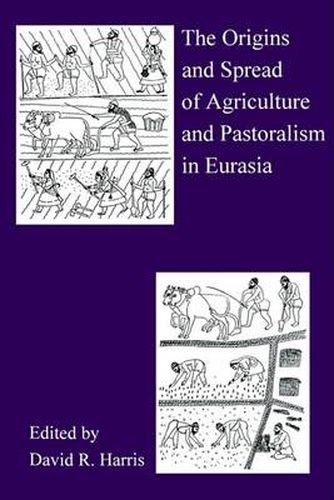Readings Newsletter
Become a Readings Member to make your shopping experience even easier.
Sign in or sign up for free!
You’re not far away from qualifying for FREE standard shipping within Australia
You’ve qualified for FREE standard shipping within Australia
The cart is loading…






As the first book to examine the origins and spread of agriculture and pastoralism in Europe and Asia as a whole, this major contribution should be essential reading for archaeologists, anthropologists, biologists and geographers. Adopting a novel approach to the subject, the authors examine it first in terms of seven different disciplinary perspectives: social, ecological, genetic, linguistic, biomolecular, epidemiological and geogrpahical. Then, 20 case studies are presented, which are based primarily on archaeological and biological evidence and which relate to three major regions: Southwest Asia, Europe and Central Asia to the Pacific. The book concludes with an overview of Eurasia as a whole. The transition from hunting and gathering to agriculture had revolutionary consequences for human society. It led to the emergence of urban civilizations and ultimately to humanity’s almost complete dependence on relatively few domesticated animals and plants. The subject has been much studied, but the results have tended to be interpreted largely in terms of local cultural sequences, with insufficient comparison made with evidence from other areas. In contrast, this book provides a continental-scale framework, with its scope extended to pastoralism because in Eurasia both the raising of livestock and the cultivation of crops were integral components of the agricultural revolution from its inception some 10,000 years ago. Comprehensive and authoritative, The Origins and Spread of Agriculture and Pastoralism in Eurasia should appeal strongly to the wide readership of students and specialists concerned with the prehistoric antecedents of modern civilization.
$9.00 standard shipping within Australia
FREE standard shipping within Australia for orders over $100.00
Express & International shipping calculated at checkout
As the first book to examine the origins and spread of agriculture and pastoralism in Europe and Asia as a whole, this major contribution should be essential reading for archaeologists, anthropologists, biologists and geographers. Adopting a novel approach to the subject, the authors examine it first in terms of seven different disciplinary perspectives: social, ecological, genetic, linguistic, biomolecular, epidemiological and geogrpahical. Then, 20 case studies are presented, which are based primarily on archaeological and biological evidence and which relate to three major regions: Southwest Asia, Europe and Central Asia to the Pacific. The book concludes with an overview of Eurasia as a whole. The transition from hunting and gathering to agriculture had revolutionary consequences for human society. It led to the emergence of urban civilizations and ultimately to humanity’s almost complete dependence on relatively few domesticated animals and plants. The subject has been much studied, but the results have tended to be interpreted largely in terms of local cultural sequences, with insufficient comparison made with evidence from other areas. In contrast, this book provides a continental-scale framework, with its scope extended to pastoralism because in Eurasia both the raising of livestock and the cultivation of crops were integral components of the agricultural revolution from its inception some 10,000 years ago. Comprehensive and authoritative, The Origins and Spread of Agriculture and Pastoralism in Eurasia should appeal strongly to the wide readership of students and specialists concerned with the prehistoric antecedents of modern civilization.